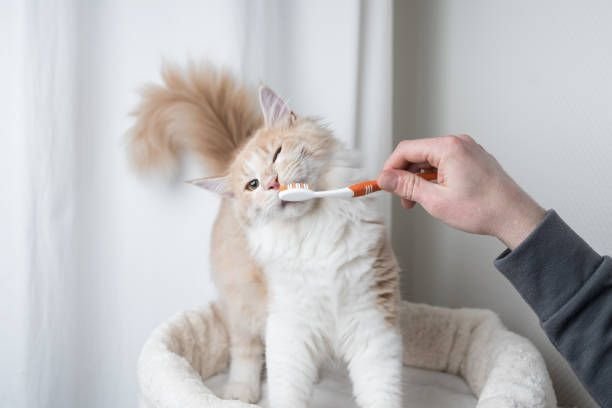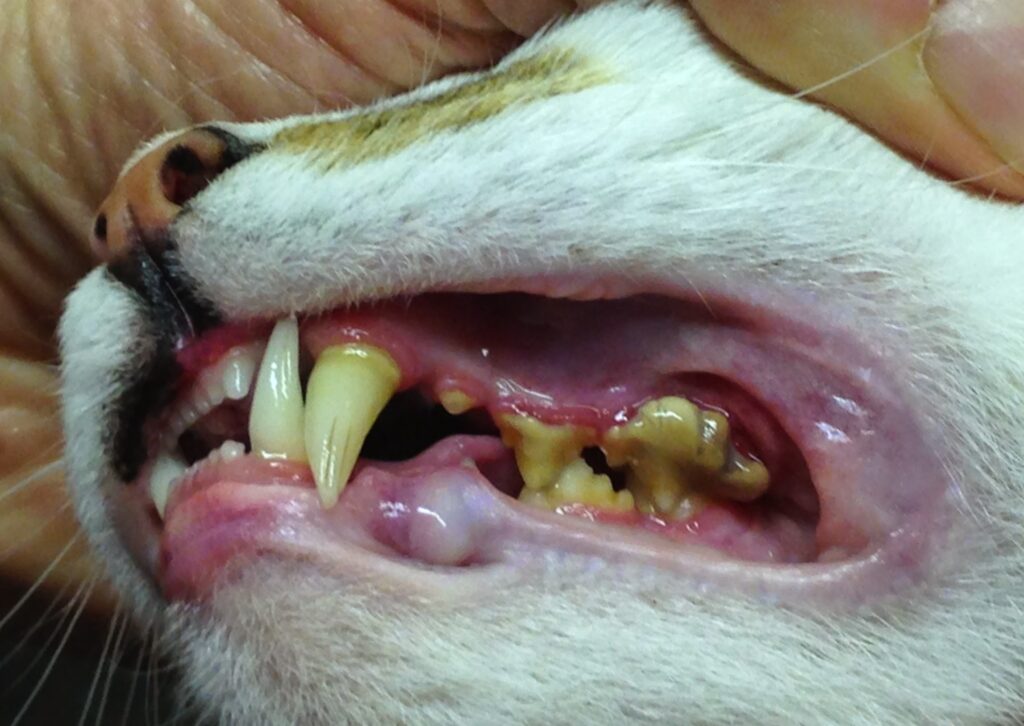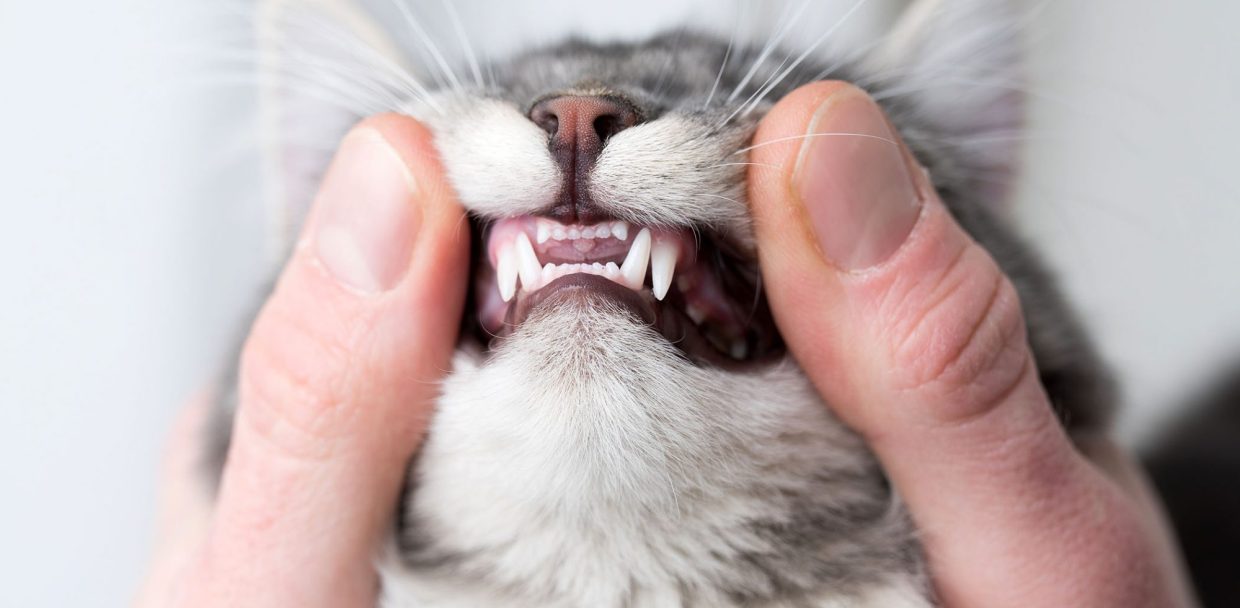Like every human being, a cat also needs dental care from a young age. You might be wondering how to take care of the cat’s dental health. Do we need to brush cats’ teeth two times like every human does or do we need to take it for a dental checkup every 6 months and where to take it?
In this blog, we got you covered. Here we have all your questions answered related to the dental well-being of your cat.
 Brushing your cats’ teeth is not an easy task. Many cats do not like their mouth being touched and messed with, so making them used to brush teeth requires great practice and patience. It is better to start when your cat is young Here are the steps that you can follow to make your cat comfortable with brushing its teeth.
Brushing your cats’ teeth is not an easy task. Many cats do not like their mouth being touched and messed with, so making them used to brush teeth requires great practice and patience. It is better to start when your cat is young Here are the steps that you can follow to make your cat comfortable with brushing its teeth.
 As we all know that cats are less expressive compared to other pet animals like dogs. So to know whether your cat is in pain or in any kind of discomfort is hard. There are some ways to know whether your cat is in pain or not (Read How to Understand if the Cat is in Pain).
When your cat is facing any dental problems, most of the time it won’t stop eating but you can look for signs to know the condition of the cat’s teeth and gum.
As we all know that cats are less expressive compared to other pet animals like dogs. So to know whether your cat is in pain or in any kind of discomfort is hard. There are some ways to know whether your cat is in pain or not (Read How to Understand if the Cat is in Pain).
When your cat is facing any dental problems, most of the time it won’t stop eating but you can look for signs to know the condition of the cat’s teeth and gum.
Importance of Dental Care
Teeth and gum disease are common in cats. About 50% to 90% of cats who are older than four years of age suffer from some kind of dental disease. This was not always the case for its ancestors. Ancestors of cats usually used to reside in the wild where they used clean their teeth by chewing bones and grass. But for pet cats, do not have suitable replacements for this. So they have a high chance of developing dental problems. Cats tend to build up bacteria and plaque from the food they take and coat the outside part of their teeth. The coating later hardens and forms tartar which causes different dental problems like gum irritation, gingivitis, tooth loss, and bad breath. Sometimes the tartar build-up is reversible but sometimes it can be so severe that it is irreversible. The only solution is by removing the problem teeth. Dental problems can be so severe sometimes that they can even affect the cat’s quality of life and vital organs like kidneys and heart. Here are some factors that play a vital role in causing diseases.- Diet
- Lack of dental care
- Genetics
- Infectious diseases like FIV, FelV, or FCV
- Abnormal alignment of teeth
Prevent Dental Problem
The good news for our fellow feline owners, you can prevent dental problems in your cat. It is best to start your cat’s dental care when it is a kitten as by the age of four most cats start to develop dental disease. As the saying goes, ‘Prevention is Better than Cure’. Starting early is the best way to minimize serious dental problems. Here are some things to start soon for the better dental health of your cat.Providing Nutritional Diet
Diet plays a vital role in preventing dental diseases. A well-balanced diet ensures that the cat gets enough nutrition in every part of its body. This aid in healing and fighting disease. Many cat food manufacturers have also manufactured kibble in different shapes to provide the required abrasive action needed for cleaning the teeth. But those kibbles do not clean adequately as cats rarely chew and swallow their food whole most of the time.Establishing Dental Care Routine
A good dental routine care for your cat also helps ensure good dental health. A good dental routine consists of brushing your cat’s teeth regularly and providing supplements or chews for your cat. When brushing your cats’ teeth do not use human toothpaste. It is not safe for cats due to the presence of fluoride which is harmful to the cat. Cats do not like being messed with their mouth so it takes great patience and treats to make your cat used to brushing their teeth. There are also different dental rinses available especially for cats. This helps reduce tartar and plaque build-up. You can also give your cat dental chews and treats also, which are also a passive way of reducing dental disease.How to brush your cats’ teeth?
 Brushing your cats’ teeth is not an easy task. Many cats do not like their mouth being touched and messed with, so making them used to brush teeth requires great practice and patience. It is better to start when your cat is young Here are the steps that you can follow to make your cat comfortable with brushing its teeth.
Brushing your cats’ teeth is not an easy task. Many cats do not like their mouth being touched and messed with, so making them used to brush teeth requires great practice and patience. It is better to start when your cat is young Here are the steps that you can follow to make your cat comfortable with brushing its teeth.
- You need to get proper tools like a cat’s toothbrush, toothpaste, dental gauze, and finger brush. Human toothpaste is a big No as it is harmful to the cat.
- Try to get your cat used to putting your finger inside its mouth. You can start by gently rubbing your finger around its mouth and then slipping your finger inside the cat’s mouth as it gets comfortable. When you are able to do so, gently massage the gums of the cat.
- Add toothpaste specially designed for the cat which is usually flavored with chicken and fish. Put a tiny amount in the finger brush or the gauze. Don’t force yourself on the cat, rather let it smell and come to it.
- Slowly introduce the brush. The cat will chew on the brush, this helps scrape off the plaque or tartar from the teeth.
Routine Dental Check-Up
Cats should get their teeth checked once every year but depending on the age, size and overall health may differ. Many cat owners tend to visit the dental hospital when the problem gets serious for the cat. So regular check-up helps to identify the problems in time and can be treated easily. At the routine checkup, the doctor will perform a physical exam on your cat’s mouth. They will look for the following things which provide them with information regarding the cats’ dental health.- Fractured or broken teeth.
- Facial Swelling
- Plaque and tartar build-up
- Presence of gingivitis or periodontal disease
- Missing extra tooth
Signs of Dental Disease in a Feline
 As we all know that cats are less expressive compared to other pet animals like dogs. So to know whether your cat is in pain or in any kind of discomfort is hard. There are some ways to know whether your cat is in pain or not (Read How to Understand if the Cat is in Pain).
When your cat is facing any dental problems, most of the time it won’t stop eating but you can look for signs to know the condition of the cat’s teeth and gum.
As we all know that cats are less expressive compared to other pet animals like dogs. So to know whether your cat is in pain or in any kind of discomfort is hard. There are some ways to know whether your cat is in pain or not (Read How to Understand if the Cat is in Pain).
When your cat is facing any dental problems, most of the time it won’t stop eating but you can look for signs to know the condition of the cat’s teeth and gum.
Signs of Dental Disease
Here are the signs to look for to know the condition of the cat’s dental health.- Inflamed or bleeding gums.
- Bad breathe
- Drooling blood
- Less grooming than usual
- Difficulty in food intake
- Loss of appetite and significant weight loss
- Visible calculus
- Tooth discoloration
- Gingivitis
- Tooth Loss
- Pawning at the mouth




